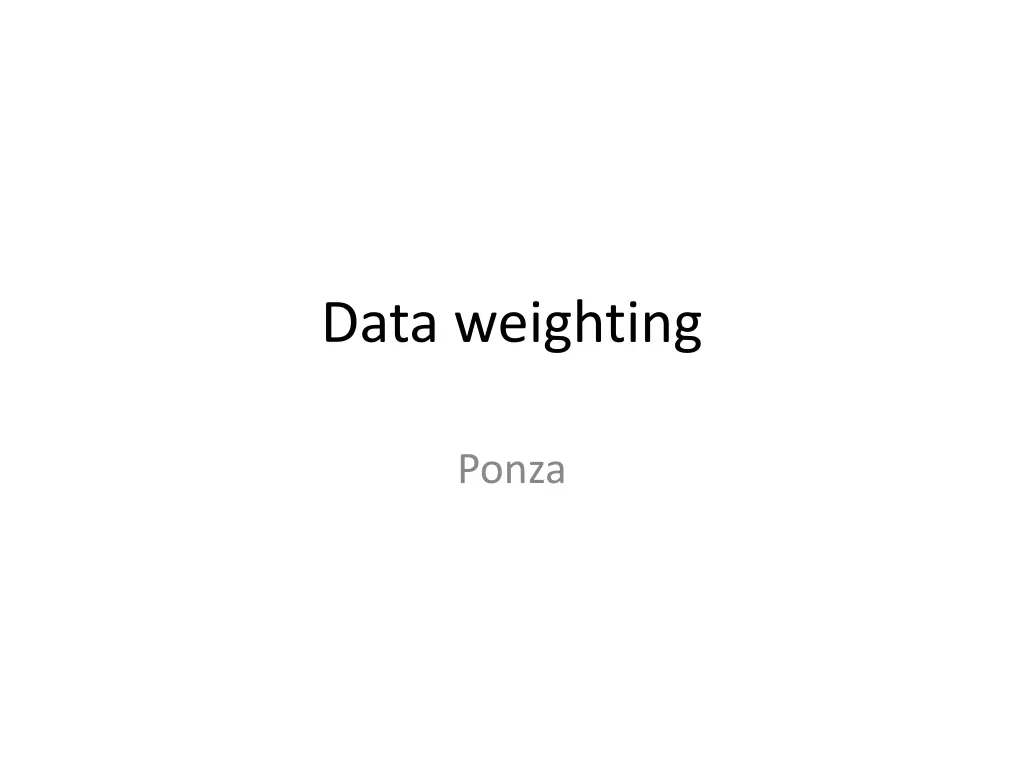
Data Weighting Methods in Statistical Analysis
Discover various data weighting methods in statistical analysis, including indices of abundance, variance adjustment factors, lambdas, and more. Learn about the guidance on additive SD estimation for indices and the art of data weighting to achieve consistency. Dive into length composition weighting, fits to composition data, extra SD considerations, and final thoughts on the subject.
Uploaded on | 2 Views
Download Presentation

Please find below an Image/Link to download the presentation.
The content on the website is provided AS IS for your information and personal use only. It may not be sold, licensed, or shared on other websites without obtaining consent from the author. If you encounter any issues during the download, it is possible that the publisher has removed the file from their server.
You are allowed to download the files provided on this website for personal or commercial use, subject to the condition that they are used lawfully. All files are the property of their respective owners.
The content on the website is provided AS IS for your information and personal use only. It may not be sold, licensed, or shared on other websites without obtaining consent from the author.
E N D
Presentation Transcript
Data weighting Ponza
Data weighting methods in SS Data file Indices of abundance Input SE(log space) Higher values give less weight Allows for year-specific weighting Compositions Input sample sizes Lower values give less weight Allows for year-specific weighting
Data weighting methods in SS Variance adjustment factors
Data weighting methods in SS Lambdas
Data weighting methods Extra SD on indices of abundance
Data weighting guidance Additive SD estimated for indices Three methods guided weighting of length and age data 1. Multiply input N s by a factor so that harmonic mean of effective N matches the mean of the input N 2. By eye, fit a line through the scatterplot of the effective N vs. the input N 3. Adjust input N so that variation around the mean contains the observed mean (Francis weighting)
Length composition weighting Midwater Trawl MeaneffN/ MeaninputN HarMeanEffN/ MeanInputN mean HarMean (effN) Francis 0.19 (0.1-0.4) Adj (inputN*Adj) meanEffN 0.25 85.35 183.36 90.53 2.15 1.06
Fits to composition data Length Age Midwater Trawl
Extra SD for indices Trawl surveys fixed at zero because estimates at lower bound
Final thoughts Data weighting is an art It is basically trying to make the residuals (or lack of fit) consistent Don t want standardized residuals much greater than 2 standard deviations Can look at residuals plots to see this These values do not need to be exact You may want to down-weight (or up-weight) some data sources based on your belief Not related to the guidance above
